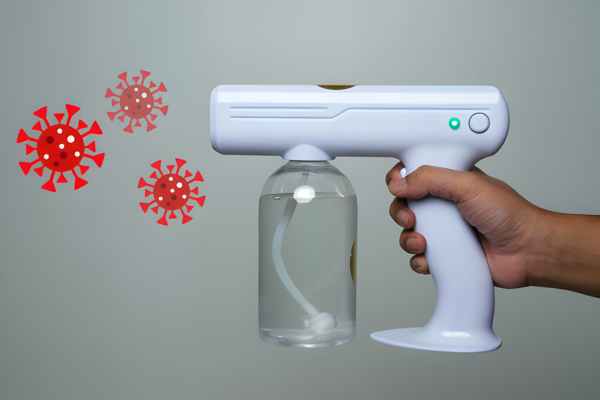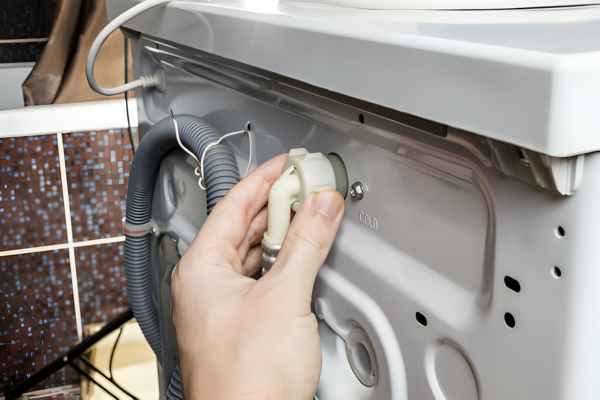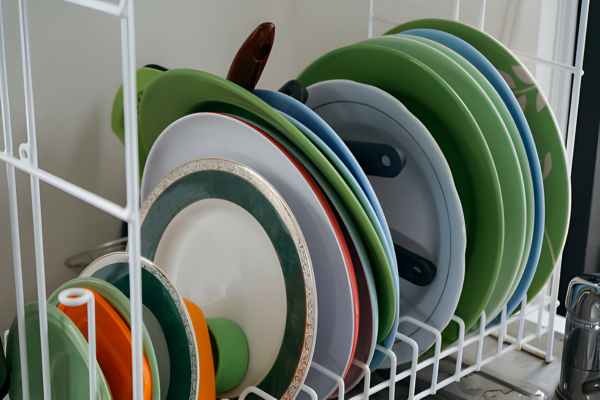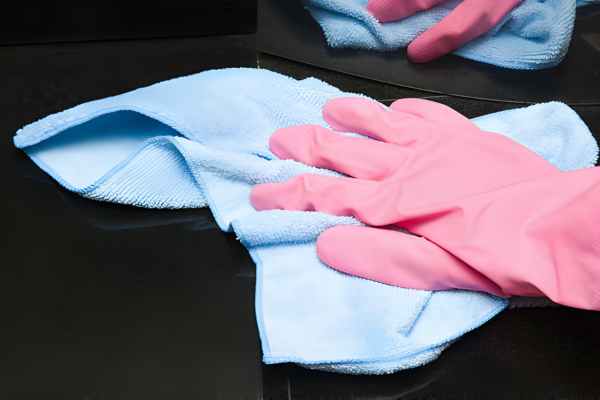Cleaning your dishwasher isn’t just about keeping it looking neat; it’s crucial for its health and efficiency. Imagine, all those bits of food and grease can build up over time, affecting its performance. But fret not, it’s easier than you think! In this handy guide, we’re tackling the how to clean the inside of your dishwasher. From the hidden nooks and crannies to the filter that’s probably seen better days, we’ve got you covered. It’s time to give your dishwasher the love it deserves. So, let’s embark on this cleaning adventure together and turn your dishwasher into the shiniest appliance in your kitchen!
How often should dishwashers be cleaned?
Dishwashers should be cleaned at least once a month to prevent buildup of food particles, grease, and mineral deposits. Regular cleaning helps maintain the dishwasher’s performance and prevents odors from developing. Additionally, it’s important to clean the filter and check for any clogs or blockages in the spray arms to ensure dishes are being properly cleaned.
In addition to monthly cleanings, it’s also a good idea to run an empty cycle with a dishwasher cleaner or white vinegar every few months to remove any lingering residues and keep the machine running smoothly. By following these cleaning guidelines, you can prolong the life of your dishwasher and ensure that it continues to operate efficiently.
What dislodges food particles in dishwashers?
Food particles in dishwashers are typically dislodged through a combination of hot water, detergent, and the mechanical action of the dishwasher’s spray arms. The hot water helps to soften and dissolve food residues, while the detergent breaks down grease and grime. The spray arms then distribute the water and detergent throughout the dishwasher, effectively dislodging food particles from dishes, utensils, and surfaces inside the appliance.
In addition to these primary mechanisms, some dishwashers also feature built-in filters or food disposal systems that help to capture and remove larger food particles from the wash water. These components play a crucial role in preventing clogs and ensuring that dishes come out clean after each cycle. Regular maintenance, such as cleaning filters and inspecting spray arms for blockages, can also help ensure optimal performance in dislodging food particles in dishwashers.
Importance of How To Clean A Dishwasher Inside
Enhanced Cleaning Performance
Regular cleaning of the dishwasher ensures it operates at peak efficiency. Dirt, food particles, and mineral buildup can hinder the machine’s effectiveness, leaving dishes less than sparkling. A clean dishwasher equals cleaner dishes.
Longevity of Appliance
Just like any appliance, a dishwasher will last longer if it’s well-maintained. Regular cleaning can prevent wear and tear caused by accumulated grime and lime scale, saving you from costly repairs or early replacement.
Odor Elimination
Food remnants and grease can cause unpleasant odors over time. Cleaning your dishwasher helps eliminate these odors, keeping your kitchen smelling fresh.
Prevention of Mold and Mildew
Moist environments like dishwashers are breeding grounds for mold and mildew. Regular cleaning prevents their growth, which is crucial for both the machine’s health and your household’s hygiene.
Safety and Hygiene
A dirty dishwasher can harbor bacteria and fungi, which can potentially contaminate your dishes. By cleaning it, you ensure a hygienic environment for washing your dishes, contributing to the overall cleanliness and health safety of your home.
Here Are Some Ideas How To Clean A Dishwasher Inside
Vinegar Wash

Kicking off your dishwasher deep-clean, the vinegar wash is a true hero. Vinegar, known for its natural disinfecting properties, works wonders. Just fill a dishwasher-safe container with white vinegar, place it on the top rack, and run the appliance on the hottest setting. This process tackles grime and odors, leaving your dishwasher smelling fresh. It’s a simple yet effective method, harnessing the power of vinegar to dissolve soap scum and food particles that build up over time.
Baking Soda Rinse

After the vinegar does its magic, it’s time for a baking soda rinse. This step is key for tackling tough stains and ensuring a sparkling finish. Simply sprinkle a generous amount of baking soda at the bottom of the dishwasher and run a short, hot cycle. This natural abrasive gently cleanses, removing any lingering odors and leaving your dishwasher interior bright and fresh. It’s the perfect follow-up to the vinegar wash.
Unclog the Sprayer Arms

The sprayer arms play a key role in your dishwasher’s function, but they can get clogged with food particles and mineral buildup. To clean them, gently remove the arms and use a toothpick or a small brush to poke out any debris from the holes. Rinse them well under running water. This step ensures a more efficient water flow and better cleaning overall.
Clean the Filter

The heart of a clean dishwasher is its filter. Often overlooked, this component traps food debris and needs regular cleaning to function effectively. Remove the filter according to your dishwasher’s instructions, usually found at the bottom. Rinse it under running water and use a soft brush to dislodge any trapped particles. A clean filter not only improves performance but also prevents odors and maintains the overall health of your dishwasher.
Wipe the Door and Gaskets

A crucial, often missed area is the door and its gaskets. These spots can accumulate grime and food residues. To tackle this, use a damp cloth or sponge with a mild detergent. Gently wipe around the door edges and the rubber gaskets. This step prevents mold build-up and maintains the seal’s effectiveness, ensuring no leaks during operation. It’s a quick yet essential part of keeping your dishwasher in top shape.
Check and Clean the Drain

The dishwasher drain can be a hotspot for clogs and unpleasant odors. Regularly checking and cleaning it can prevent these issues. Locate the drain at the bottom of your dishwasher and remove any visible food particles or debris. This simple action enhances drainage efficiency and prevents water from becoming stagnant, which can lead to unpleasant smells and reduced cleaning effectiveness.
Use a Commercial Cleaner

For a thorough cleanse, consider using a commercial dishwasher cleaner. These specialized products are designed to remove tough limescale and mineral build-up that can occur in hard-to-reach areas. Follow the instructions on the cleaner, typically involving running an empty cycle. This is especially useful in areas with hard water, where mineral deposits are more prevalent.
Clean the Utensil Rack

The utensil rack, often loaded with silverware and small items, needs attention too. Food particles can get trapped in its crevices. Remove the rack and wash it in the sink, using a brush to get into the nooks and crannies. This step ensures your utensils are being cleaned in a debris-free environment.
Inspect and Clean the Racks

Over time, the dishwasher racks can wear and rust. Inspect them regularly for any signs of damage. Use a dishwasher-safe rack repair kit to cover any exposed metal. Cleaning the racks is also vital. Wipe them down with a damp cloth, paying close attention to the wheels and sliders to ensure smooth operation.
Regular Maintenance Washes

Lastly, regular maintenance washes are key to a long-lasting and efficient dishwasher. Running an empty cycle with a dishwasher cleaner or vinegar once a month helps maintain its performance. It keeps the interior clean, prevents odor build-up, and ensures your dishwasher remains a reliable appliance in your kitchen.
The Final Thought
Keeping your dishwasher clean on the inside is essential for maintaining its efficiency and longevity. By following the simple steps outlined in this article, you can ensure that your dishwasher remains free from buildup and odors, and continues to produce sparkling clean dishes. Regular maintenance and cleaning of the dishwasher’s interior will not only improve its performance but also contribute to a healthier kitchen environment. Remember to check for any leftover food particles or debris after each cycle and perform a deep clean at least once a month. With these practices in place, you can enjoy the convenience of a well-maintained dishwasher for years to come.
